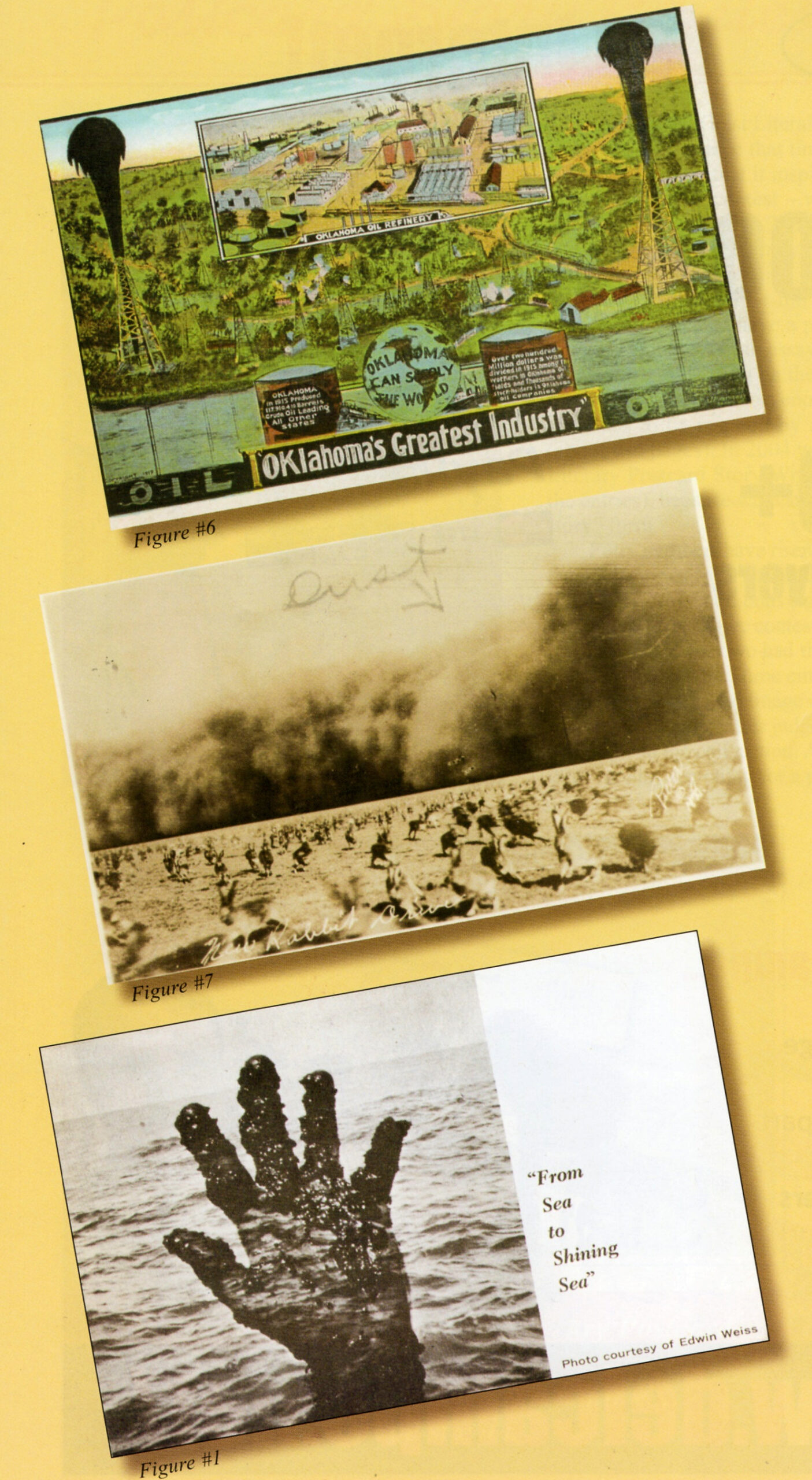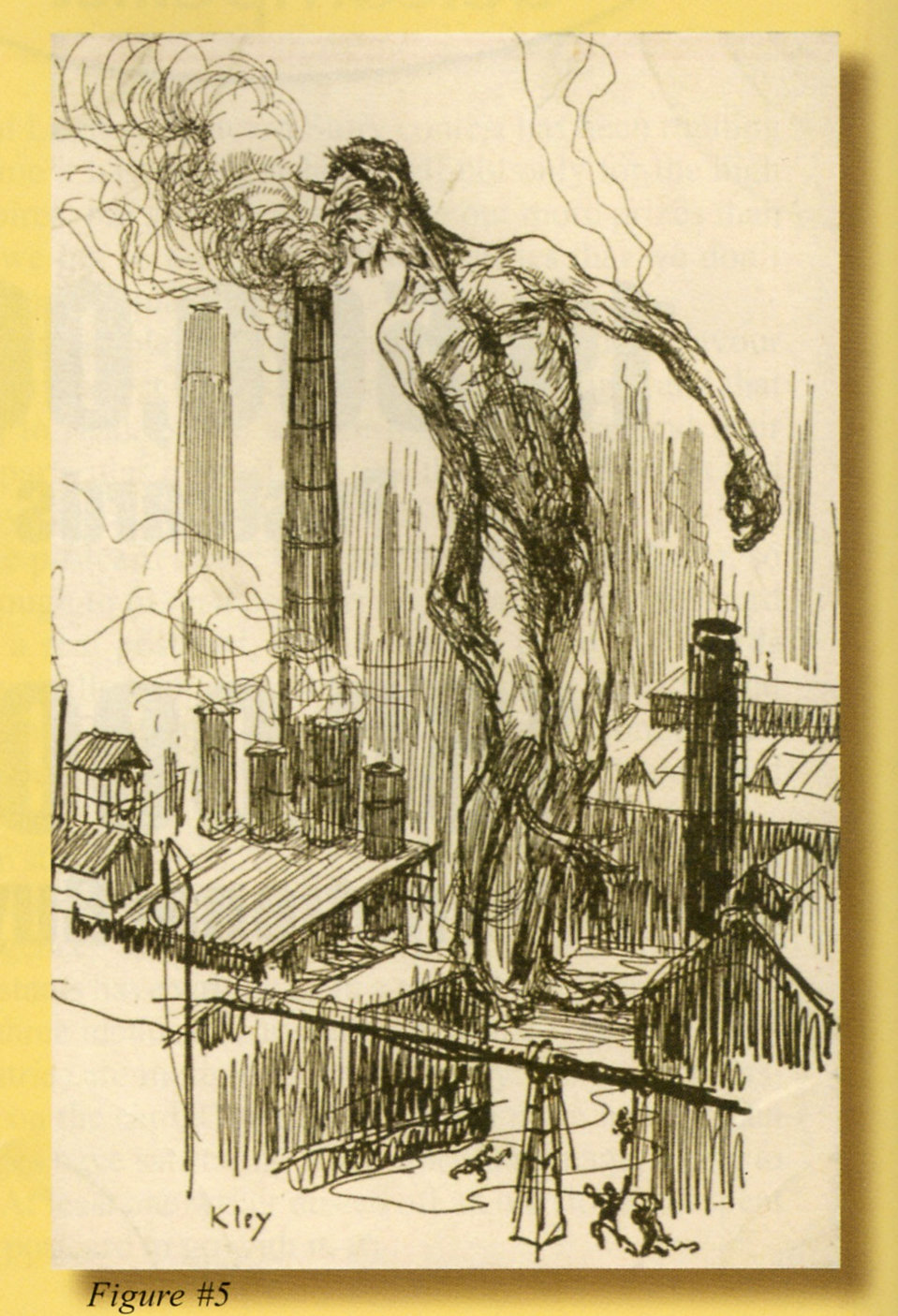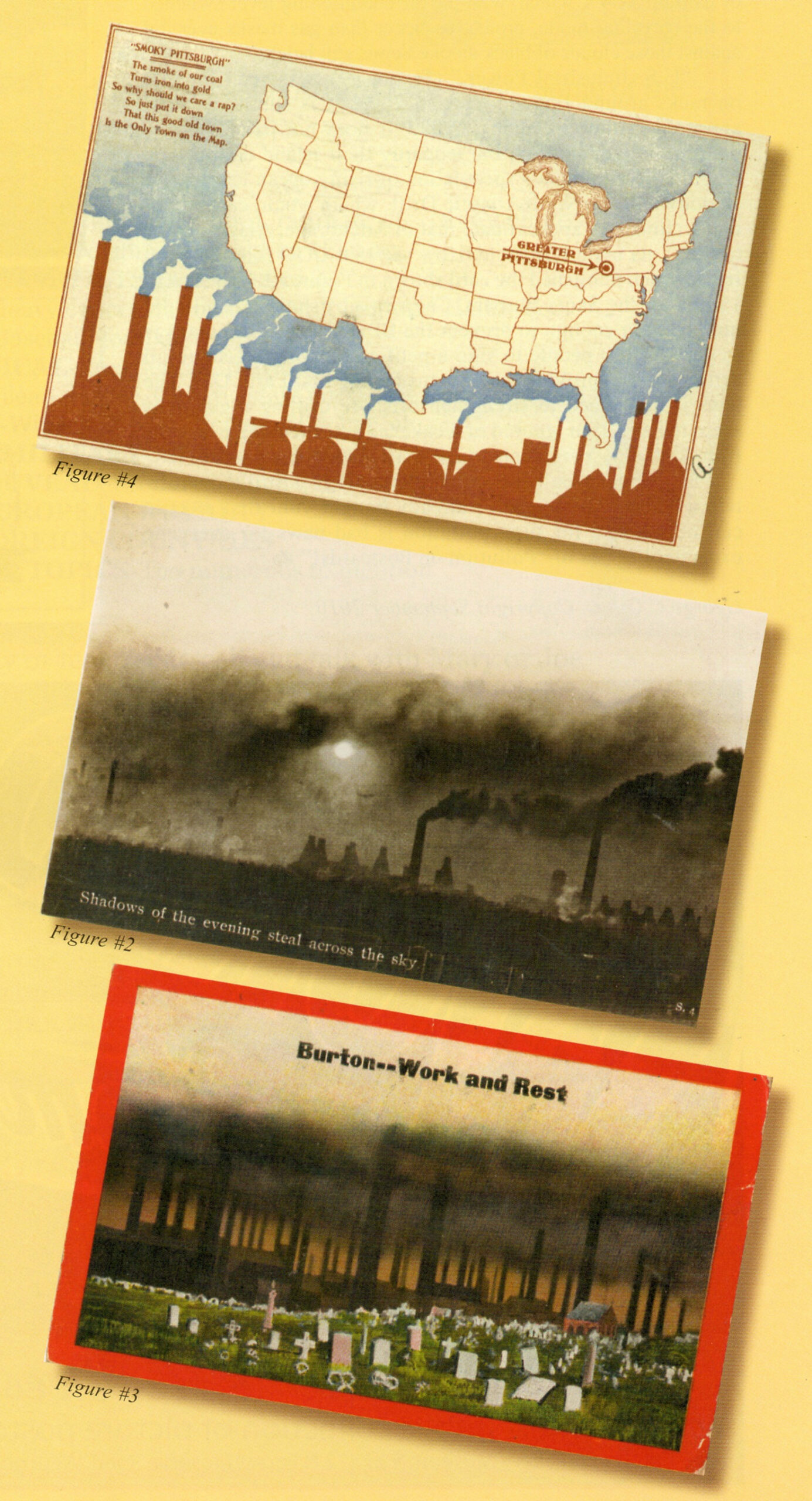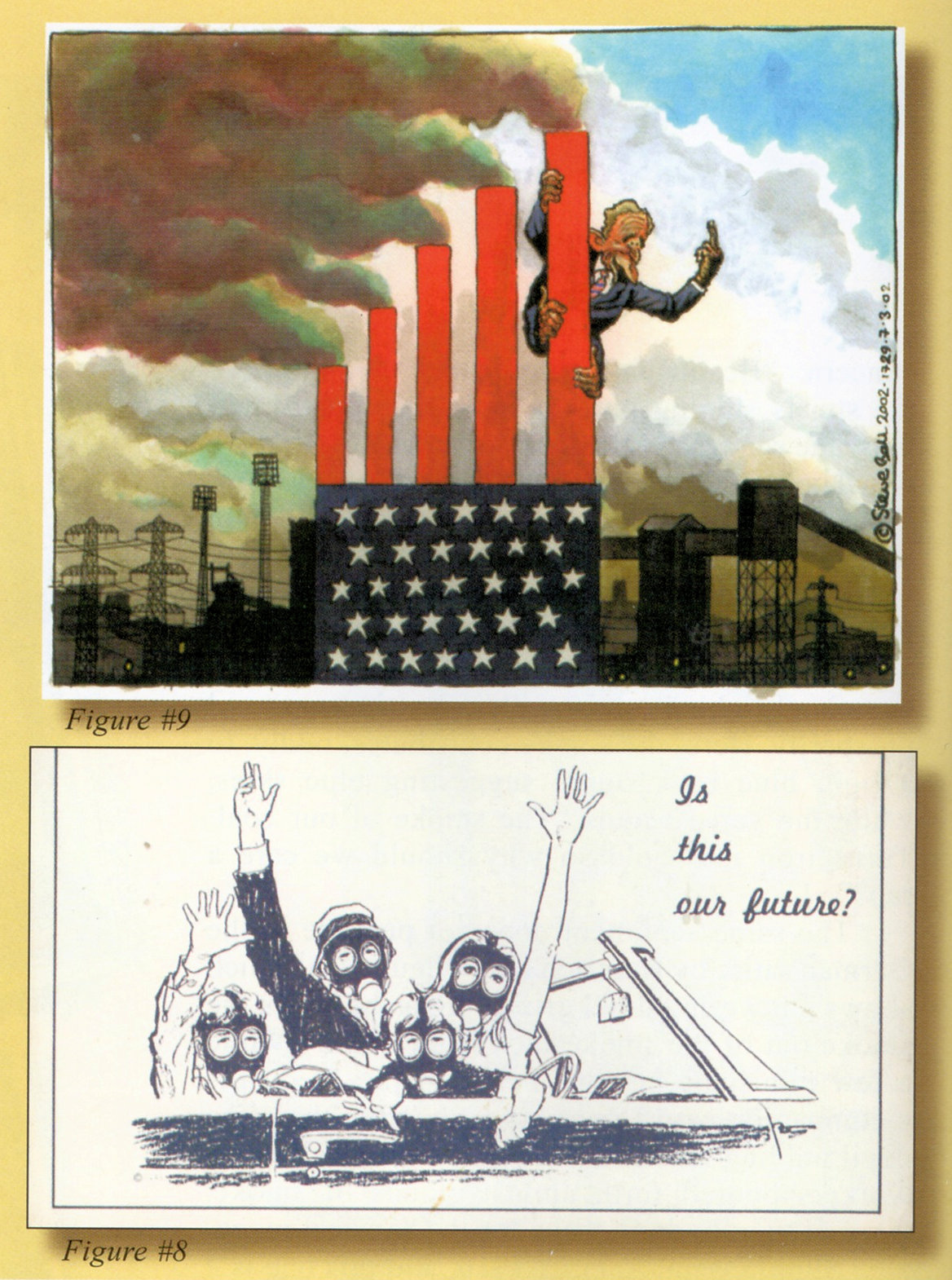The subject of pollution on post cards leaves me feeling guilty. Whenever I see the image of that black, oily hand (figure 1) rising up out of the sea, my blood starts to boil and I contribute, ever so slightly, to global warming! As a sometime resident of the Emerald Coast (that 120 mile stretch of the Florida panhandle once voted by editors of Life magazine to be "the Most Beautiful Beach in America"). I was greatly saddened as the deepwater Horizon fiasco unfolded this past spring... I asked myself, could there be, amongst the jumble of cards earmarked as fodder for future post card articles, the markings of one on pollution? After all, there was hardly any concern in the public mind about the real danger of pollution before Earth day began in 1969, true?

My first discovery was a lovely real-photo (figure 2) entitled "Shadows of evening steal across the sky", showing a scene from Dickensian, England. "Stoke-On-Trent', the sender tells us, “looks (like this) at night", it "is a pottery town". Similar cards were mass-produced with likewise iron is titles, all relegating pollution to a problem of the working class, not of a universal concern. "Beautiful Birmingham", "Somewhere the sun is shining but not in (blank to be filled in by the sender), "Burton-work and Rest"(figure 3). The last shows smokestacks and gravestones, not so much as a testament to the danger of pollution as comic effect.
Even more disturbingly, this 1908 "Smoky Pittsburgh" (figure 4) postcard actually takes pride in the city's reputation for air pollution, equating belching smoke with industriousness and prosperity. Here, the smoke contributes, oddly, to a light blue background suggesting blue skies, while the verse begins "The smoke of our coal, Turns iron into gold, So why should we care a rap...."
The same sentiment does not pervade the German satire by Heinrich Kley (figure 5), which shows a towering devil grimacing as he sniffs the smoke out of the smokestack from a mill , while a few miniscule humans flee in panic. It recalls a companion card I once sold, showing the same devil holding his hand over the smokestack while workers poured forth amidst clouds of smoke. Kley originally drew these for the satirical magazine Simplicissimus, circa 1910, and this one is # 7 from Series X. Many, many other fantastic and highly collectible cards exist from these series, some apparently hand-colored by the publisher. These are not at all easy to find. Perhaps, no other draughtsman was so adept with the pen or so prescient with a sentiment. It might be more in tune with the times a century later!
Pollution was decidedly not a concern of the promoter who published this 1920ish beauty extolling "Oil-Oklahoma's Greatest Industry".(Figure 6) Twin gushers spout uncontrollably into the sky on either side, recalling the disastrous 1910 Lakeview, California gusher, which reached a height of 200 feet. It gushed unceasingly for a year and a half, creating a 60 acre lake of crude. So much oil, in fact, that id depressed the market, and the drillers, who thought they had struck it rich, barely broke even.


A memorable column in the Washington Post a few years back described the midwestern dustbowl of the 1930's as the only "real" pollution crisis that our country has faced; in contrast to "warnings of environmental apocalypse" many scientists are sounding today. Back in the 1920's, misguided government policies produced a bubble in demand for wheat, which in turn caused catastrophic soil erosion in the midwest, eventually producing 3 tons of dust for every American alive. Dust storms got so bad that remedial legislation was being passed in Washington when the sun vanished and a copper-colored enveloped the Capitol. This 1930's real-photo (figure 7) entitled "New Rabbit Drive", of an ominous cloud advancing, not only documents this calamity, but also gives new meaning to the term "dust bunnies".
The Clean Air Amendment signed into law by the President on December 31, 1970 might be what is advocated on this unset postcard which asks “Is this our future?" (figure 8). The answer is clearly no, as Americans have largely forsaken convertibles in favor of hardtop SUVs, which, with the air conditioning lever switched to the recycling mode, protect us better against those clouds of black smoke semis still belch than gas masks ever did!
"U.S. Industrial Power", (Figure 9), was seen for sale on racks around London back in 2003. It is subtitled "First appeared in the Guardian 7/3/02". It does not paint a pretty picture, but considering the jeopardy their island nation is in (should climatologist' speculation of rising ocean level, or a shutdown of the North Atlantic Drift, which would cause London's climate to approximate that of Anchorage, Alaska-come to pass), understandable. How sad that GOO (Get Oil Out, Inc.) which published the card shown in Figure 1 way back in 1969, after the Santa Barbara, California offshore oil spill, did not last long enough to prevent the BP disaster. It did manage to get 100,000 people to sign a petition banning off shore oil drilling and provide the impetus for the first Earth Day. The laws it influenced to strengthen offshore drilling regulations seem to have been ignored or weakened since has left everyone from gulf coast residents to BP shareholder the poorer.
So whether you believe that climatology is still too of an uncertain science, or have already bought your first electric car, one thing's for sure, pollution is bad news for everyone except collectors of "Pollution on Postcards"!
George C Gibbs, Copyright September 2010

